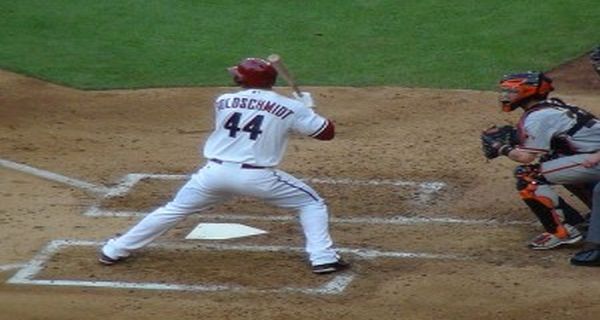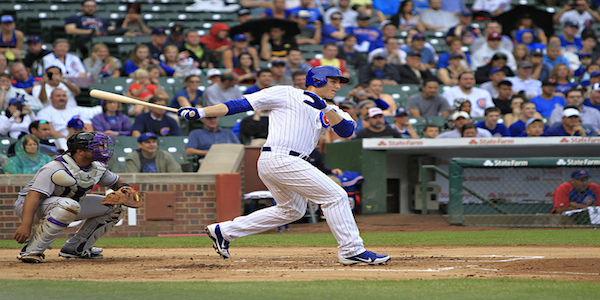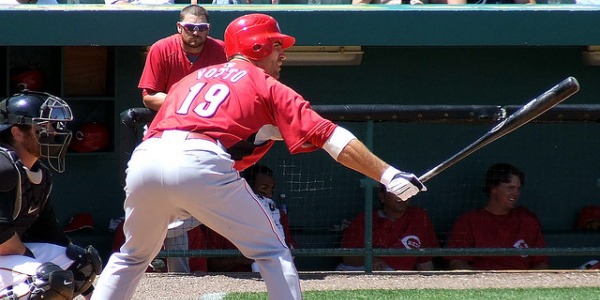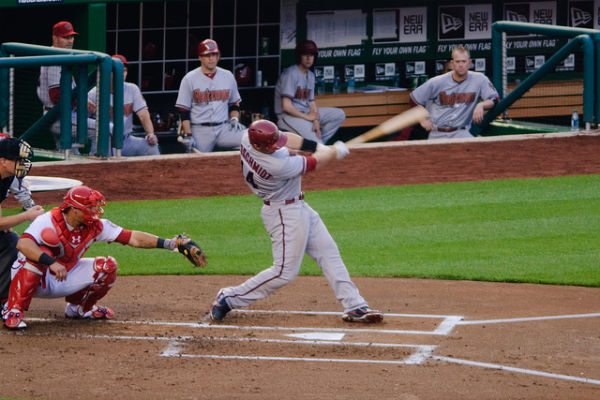A Look Back at the 2013 Draft: NL First Basemen

As we noticed with the catchers, positions are rarely balanced between the leagues. One league will have the upper hand and it will change depending on the position. The National League definitely dominated the catchers, but we are going to see the reverse with first basemen. The table coming up will demonstrate that point in spades. Just as a reminder, we saw four first basemen create more than 100 runs in the American League last season and eight first basemen had total averages of .300 or better.
Naturally, the first base crop may not be as strong as it appears in the American League and it may not be as weak as it appears in the National League. Often, we see some singular events that collect together to make a certain position appear to be exceptionally strong or weak. Every year brings different events and it’s always interesting to see how this affects the draft.
[am4show have=’p3;p4;p7;’ guest_error=’Front Office’ user_error=’Front Office’ ]
|
Owned |
TAV |
BR |
RC |
|
| Joey Votto |
99 |
.347 |
43.6 |
96 |
| Adrian Gonzalez |
98 |
.286 |
12.4 |
98 |
| Paul Goldschmidt |
98 |
.308 |
15.9 |
91 |
| Allen Craig |
97 |
.308 |
23.3 |
81 |
| Freddie Freeman |
94 |
.285 |
10.8 |
84 |
| Ryan Howard |
94 |
.251 |
-4.4 |
31 |
| Anthony Rizzo |
93 |
.283 |
7.1 |
53 |
| Ike Davis |
83 |
.270 |
6.9 |
72 |
| Adam Laroche |
78 |
.303 |
20.7 |
98 |
| Matt Carpenter |
66 |
.293 |
10.2 |
50 |
| Corey Hart |
49 |
.283 |
18.4 |
91 |
| Brandon Belt |
47 |
.304 |
9.2 |
65 |
| Garrett Jones |
32 |
.300 |
14.4 |
78 |
| Yonder Alonso |
10 |
.278 |
6.2 |
74 |
| Matt Adams |
8 |
.228 |
-5.7 |
9 |
| Logan Morrison |
6 |
.249 |
-3.6 |
36 |
| Todd Helton |
1 |
.250 |
-3.0 |
34 |
| Gaby Sanchez |
1 |
.216 |
-12.4 |
27 |
| Median |
—– |
.284 |
9.7 |
73 |
Perhaps, the single most important event from 2012 happened at the end of 2011 when Ryan Howard tore his achilles tendon in the NLDS. That single event sent shock waves through the National League first base hierarchy and to the Phillies as well. Howard played nearly half the season, but turned in a decidedly below average .251 total average and created only 31 runs. Normally, he is a 100+ run producer although his actual runs created totals have been less impressive recently than you might think.
- 2006: 169
- 2007: 124
- 2008: 113
- 2009: 130
- 2010: 97
- 2011: 97
For those that aren’t into these high brow numbers, you’ll note that he drove in more than 130 runs in each season from 2006 to 2009, but dropped off considerably in 2010 and 2011. Sure, he still drove in more than 100 runs, but Howard was already beginning to look a lot more ordinary. He drove in 108 and 116 runs those two seasons before a career low of 56 last season. Howard still might drive in 100 runs this season, but when you consider the dwindling batting average (and OBP) he is not anything close to special anymore.
On the flip side, fantasy fans are beginning to follow a common story in St. Louis. A couple of years ago, a young first baseman named Allen Craig burst on the scene as a part time player. Craig could play (and still can) a number of positions, so he got his start in the outfield initially. Now, he has a new contract and seems to have settled in at first base. The next generation of Cardinal utility guys has hit the scene in the form of Matt Carpenter and Matt Adams. Adams will likely remain a utility guy, but Carpenter is settling in at second base.
This past weekend, a fantasy player asked me on twitter whether she should keep Carpenter or trade him. She had been offered Kendrys Morales for him. That’s an intriguing question by itself as Morales is probably destined to create between 80 and 90 runs as the regular DH in Seattle. So, do you trade someone that might or might not play regularly or do you hold onto him in the hopes that he will play regularly and give you surprising production at second? That’s a hard question to answer at this point, but Carpenter appears to be handling the bat about as well as Craig did when he burst on the scene. It must be nice to be a Cardinals fan these days.
The final two sleepers fall into different categories. The first comes from what I wantingly call the “Lou Brown” approach. Lou Brown was the manager from Major League. In the final game he brings Ricky Vaughn into the game and says, “I know he hasn’t done much against this guy, but I got a hunch he’s due.” I rarely ever throw science aside, but occasionally I have to. Logan Morrison is recovering from injury currently, and he is coming off a terrible season. Yet, he is moving back to his natural position from left field and likely has something to prove. Moreover, if he performs then he will get paid and if he’s going to get paid it won’t be happening in Miami. Escaping a terrible situation is always the best motivator.
Garrett Jones comes from the scientific category. He is eligible in the outfield in addition to first base and produced a .300 TAV last season. Furthermore, the presence of Gaby Sanchez allows Clint Hurdle to mix and match his lineups so Jones can be successful more often. All of that points to the fact that a 32 percent owned rate is far too low for a player of this caliber. Would I want him in my starting lineup? I would lean no given the fact that first base is full of talented guys. Thirteen different first basemen had total averages higher than Jones’ .300. If you can’t do better than Jones in your mixed league then you might be in trouble.
Yet, in NL only leagues and for your bench you could do a lot worse. Keep in mind that it is still way too early to worry about what is going on this year. For one, when you pick up a player, nothing he has done before can help or hurt you. So, struggles or explosions shouldn’t factor in either way. Fantasy baseball is about the long haul and over the long haul Jones will be solid.
[/am4show]




